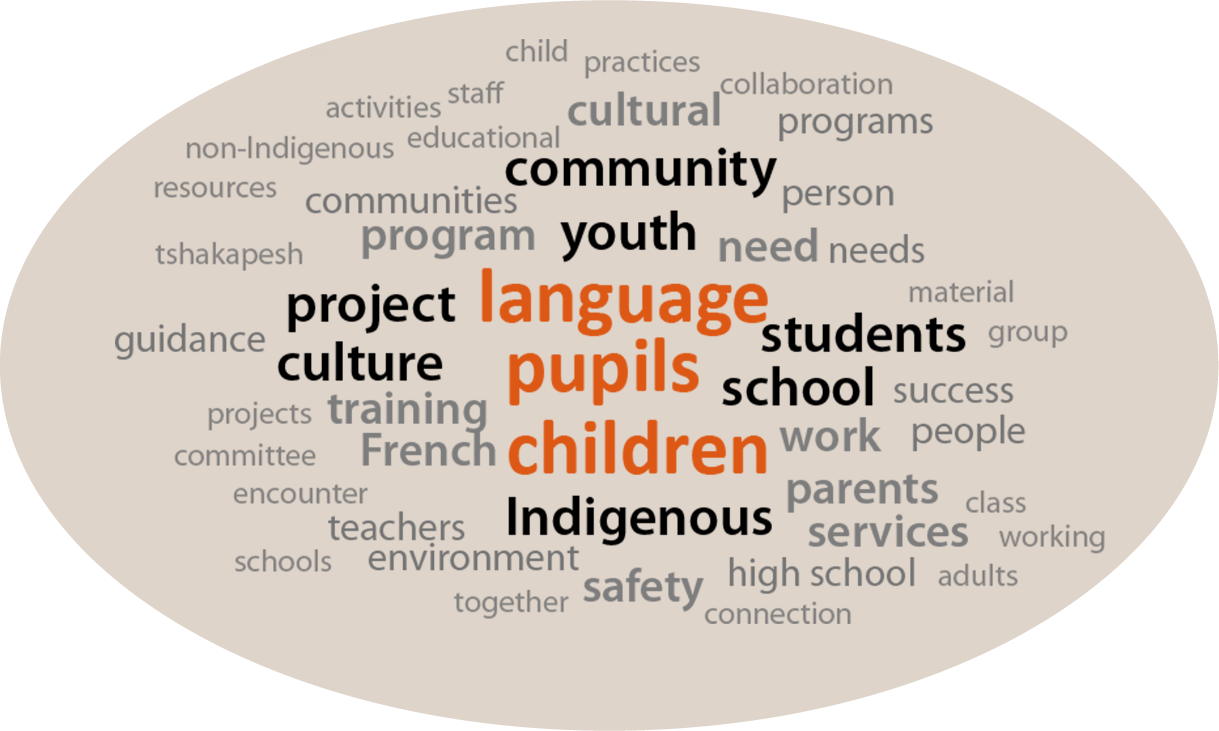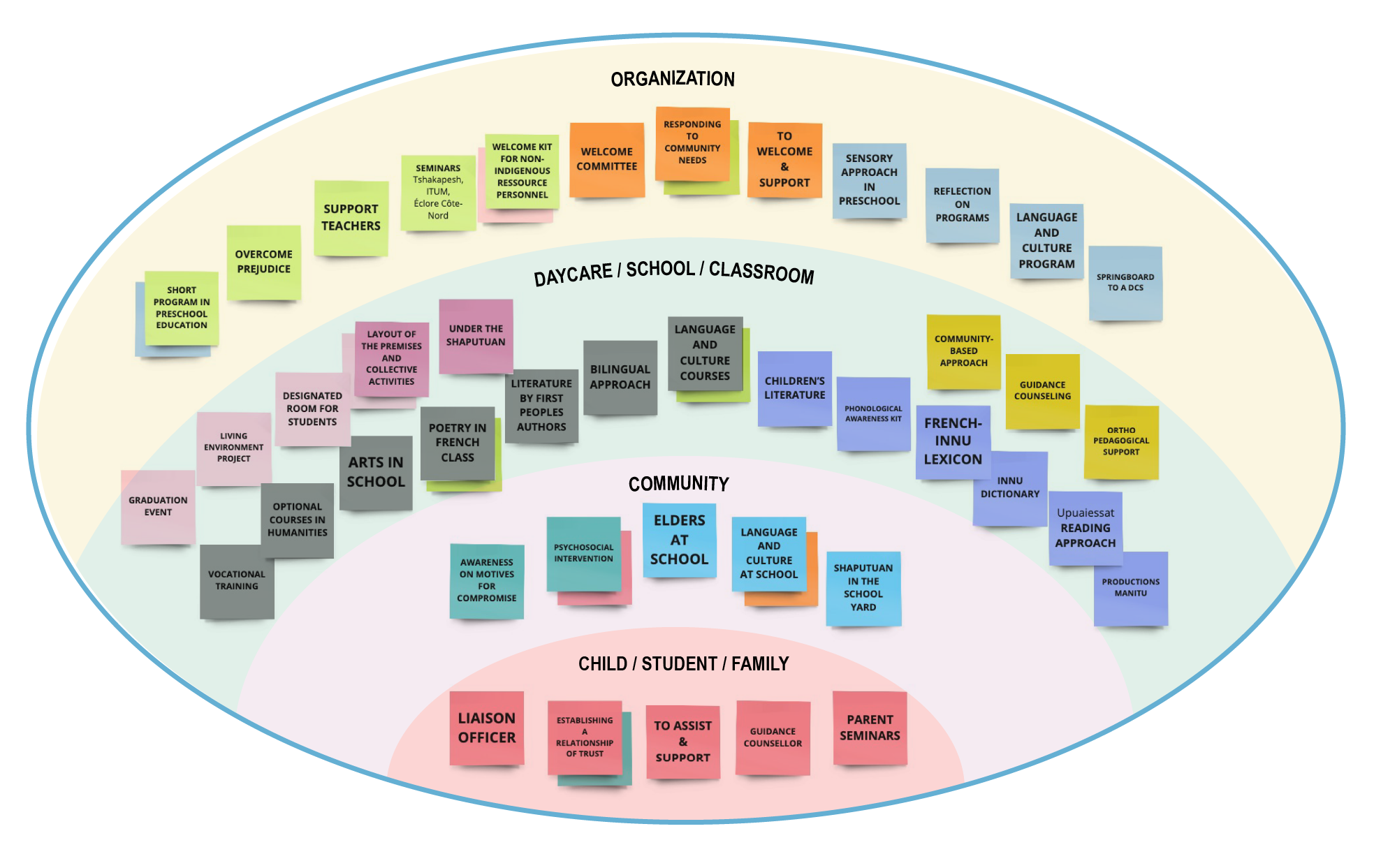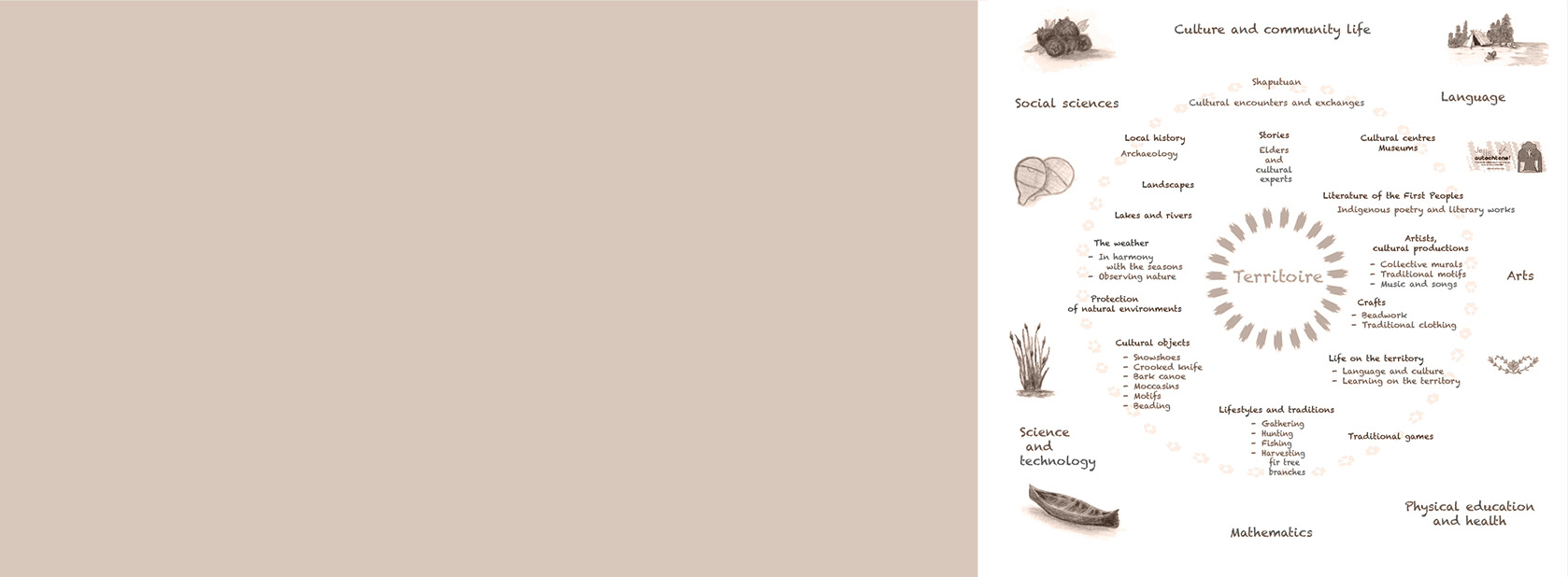
Let's walk together, let's learn to navigate together, as equals, to meet the great collective challenge of cultural safety!
Through encounters promoting sharing, recognition and appreciation, this collaborative research presents specific examples of practices involving cultural safety and highlights knowledge on educational practices.
Its strength lies in the cultural knowledge and experience of the people who shared what they do on a daily basis, bringing to light specific practices, in daycare through to university, developed in both Innu and provincial contexts.
The findings offer inspiring courses of action by sharing the practices of committed and passionate individuals who work every day to support the educational perseverance and success of Innu learners. This foundation can inspire all educational settings.
Utitshipin ma kuessipanan tshetshi utetetan, nui shaputuepin e metemeian ne meshkenam e innuian. Ishi ishpitenitaman mak ishi tapueienitaman nui uiten. Teshep nui shaputuepen e pimutaian nitinnu-aitun ashit e patakutaian nitinnu-aimun.
When the time comes for me to engage with you, in your environment, I want to be able to embrace my identity as a First Nation. I want to express myself according to my beliefs, values and cultural knowledge. I want to assert my identity in my language and culture.
– Julie Rock
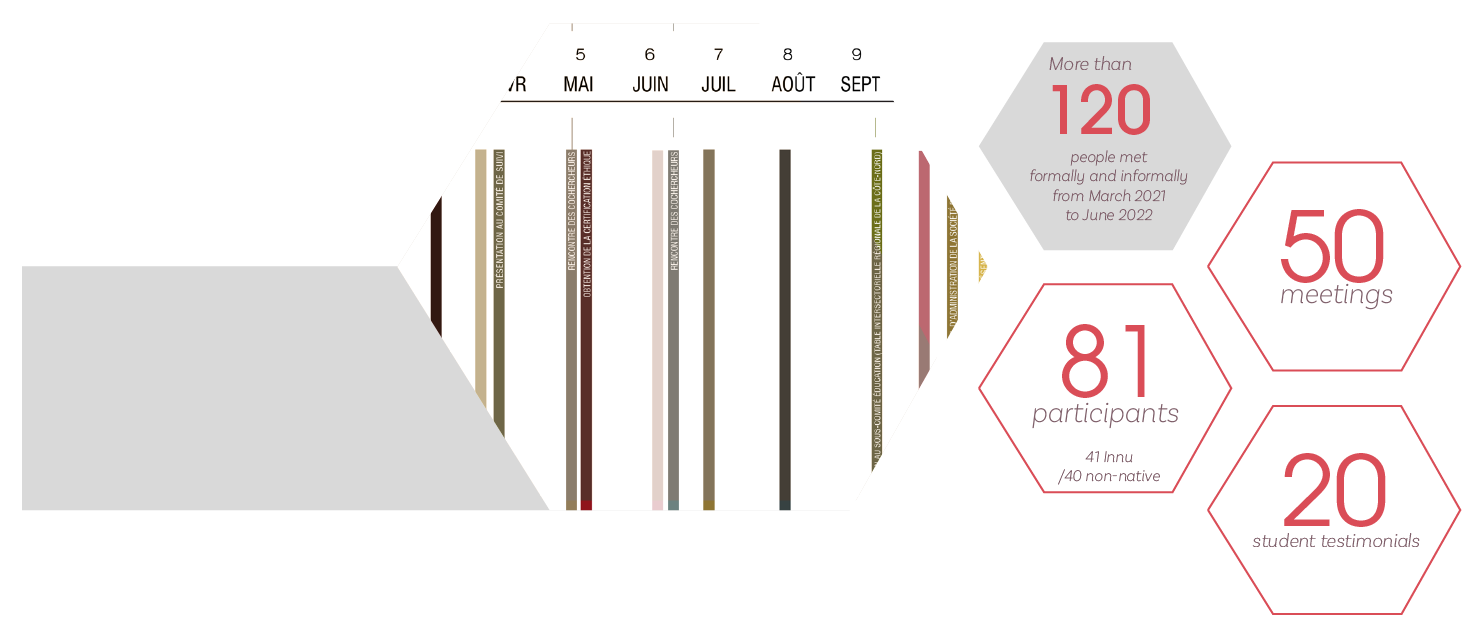
RESEARCH CONTEXT
ISSUE 
One of the defining issues in supporting the educational perseverance and success of Indigenous students would be the connection between culture and educational practices. This context of connection offers significant challenges in matters of language, culture, pedagogical approaches and programs. To address these challenges, practices involving cultural safety provide opportunities to be explored regarding the transmission of language and culture, learning models, pedagogies, cultural knowledge, educational practices and other elements relating to child development, health and well-being.

 RECHEARCH QUESTION
RECHEARCH QUESTION
What cultural safety practices support the educational perseverance and success of Indigenous students?
 OBJECTIVES
OBJECTIVES

-
Identify cultural safety practices that support the educational perseverance and success of First Peoples youth.
-
Collaboratively document examples of cultural safety practices set in their context, based on what is being done by members of school staff and members of organizations working to support First Peoples youth.
-
Identify the criteria for educational perseverance and success among examples of cultural safety practices.
-
Identify connections and limitations of existing programs at the elementary and high school level (post-graduate).
-
Analyze opportunities and pitfalls of cultural safety by studying the practices and testimonials of participants and students.
-
Define the examples of cultural safety practices and make them available on a website for dissemination among educational circles and research communities.
METHODOLOGY 
The cultural safety practices that help support the perseverance and success of Indigenous students were determined by the research participants based on their know how.
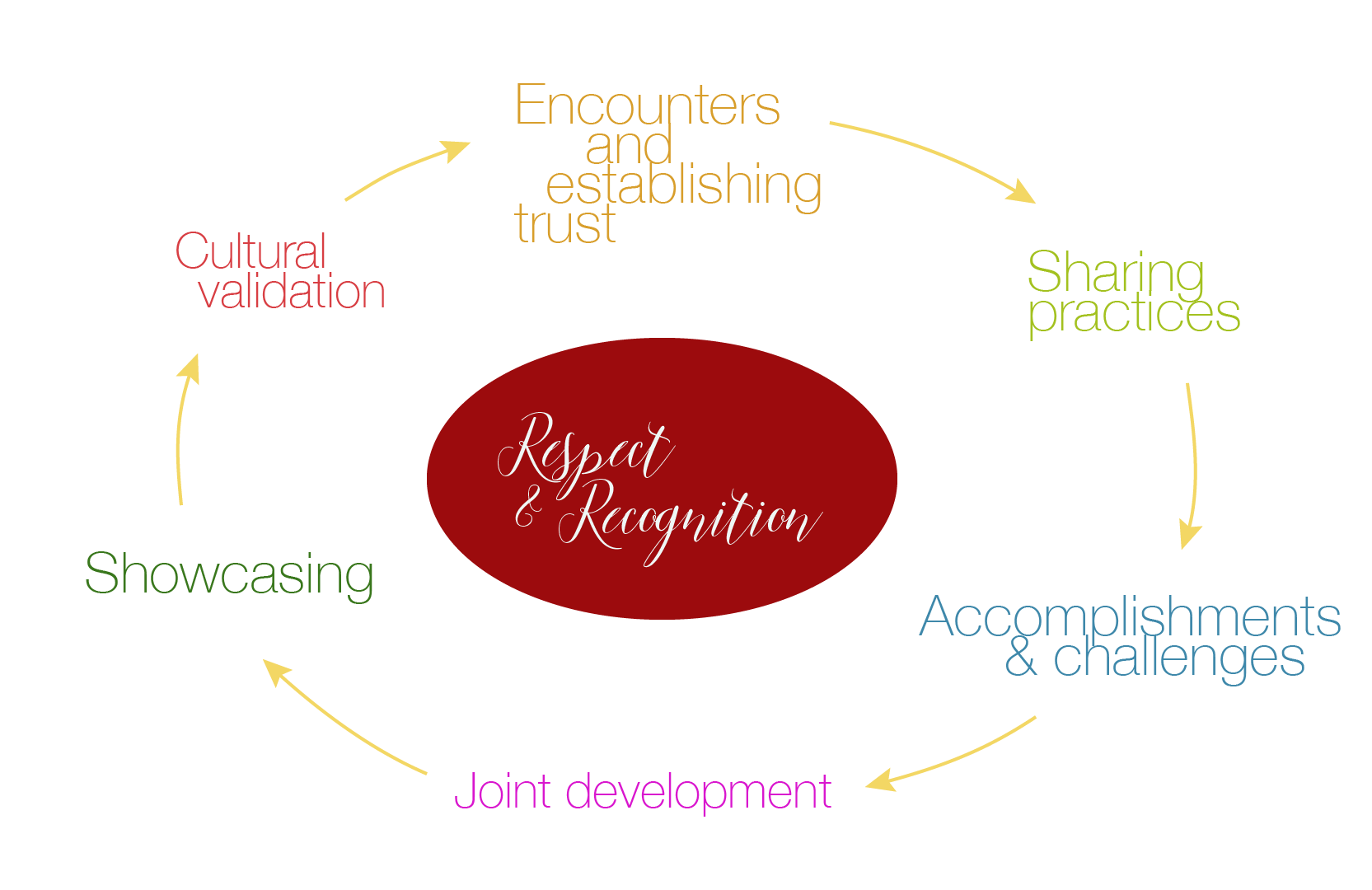
A collaborative approach
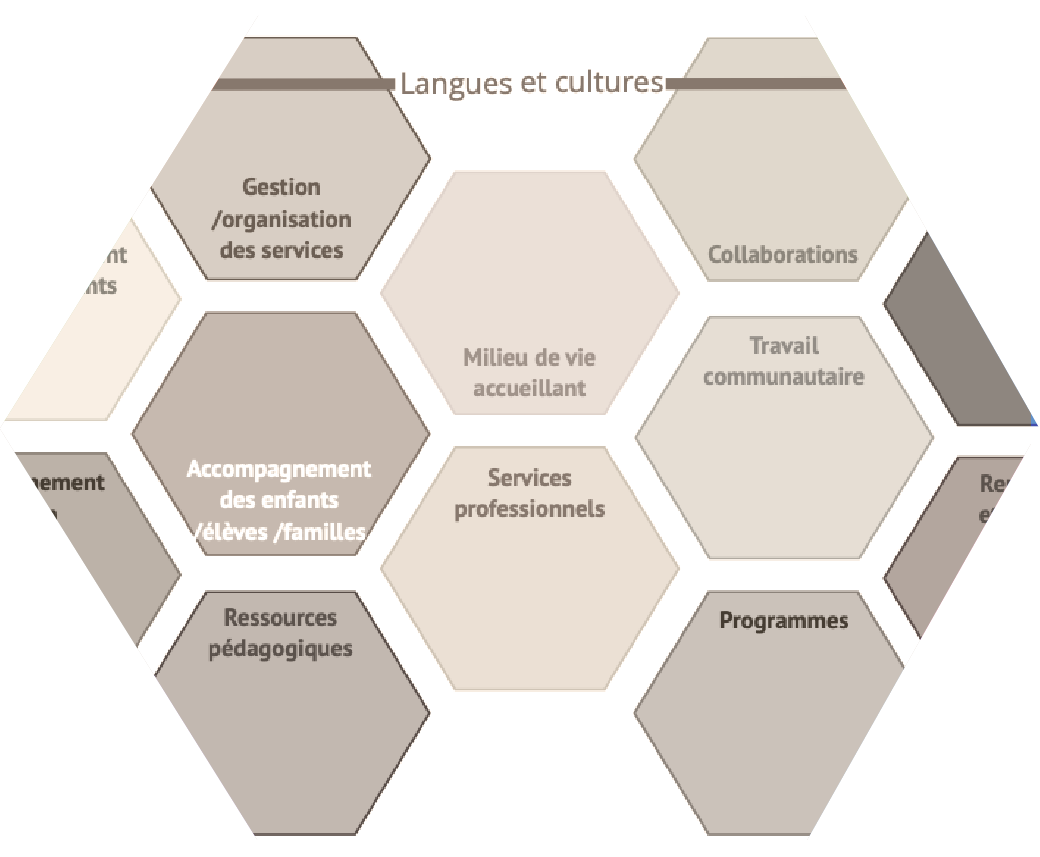
PRIMARY RESULTS
" What's good for Indigenous students is good for all students "
EXAMPLES OF CULTURAL SAFETY PRACTICES
The collective dimension, often brought up in examples of practices, demonstrates the importance of working together to offer the best possible support for perseverance and success.
KEY BENEFITS
 A LOOK AT PERSEVERANCE AND SUCCESS
A LOOK AT PERSEVERANCE AND SUCCESS
Educational success and perseverance
The criteria mentioned for perseverance and success relate to language, culture, pride, interest, curiosity, laughter, smiles, mutual aid, social integration and having a goal in life. Each achievement is important, not just the diploma. These criteria are in line with the principles of inclusive education, which consider the learner as a whole.
 COURSES OF ACTION FOR TEACHER TRAINING
COURSES OF ACTION FOR TEACHER TRAINING
Competency 15 – Value and promote Indigenous knowledge, worldviews, cultures and history
Examples of research-documented practices in connection with courses inspired by practices
REFLECTION
ON PROGRAMS 
While almost all provinces have a strategic or reference framework specifying that a fundamental place must be allotted to Indigenous perspectives, there is great disparity across the different provinces and territories when it comes to incorporating Indigenous content or learning principles.
There are many possibilities for mobilizing Indigenous knowledge, realities and perspectives in all school subjects.
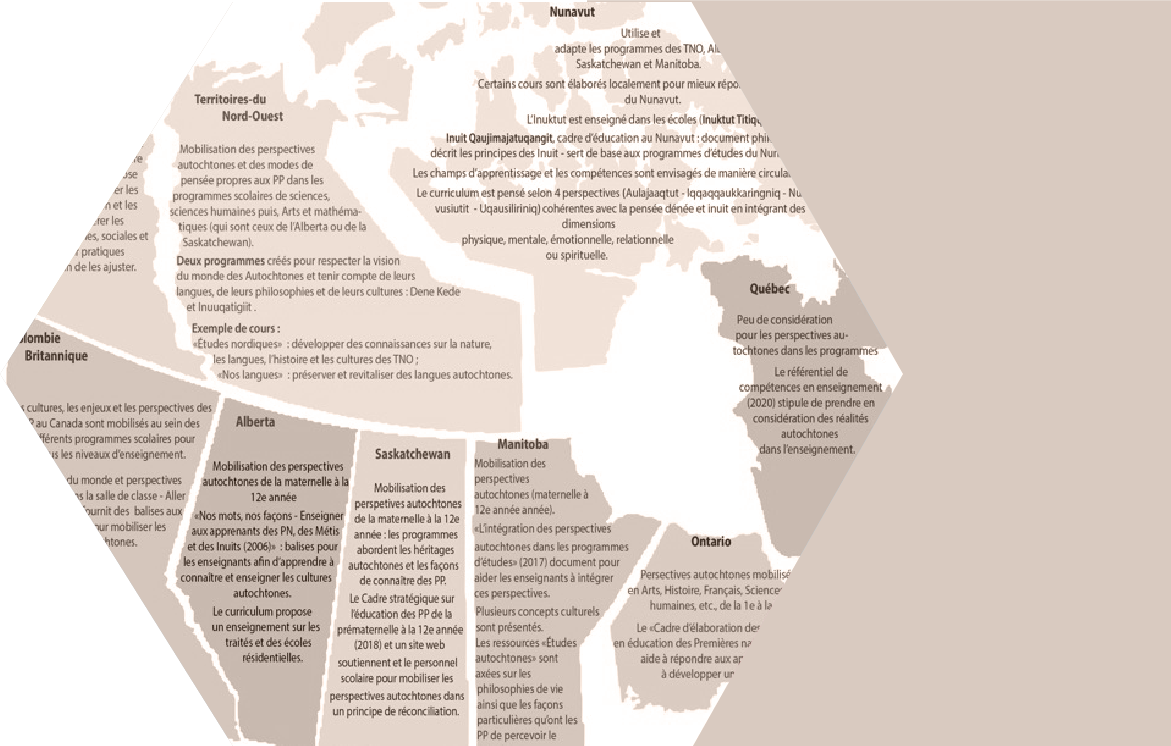
KEY CONTRIBUTORS 
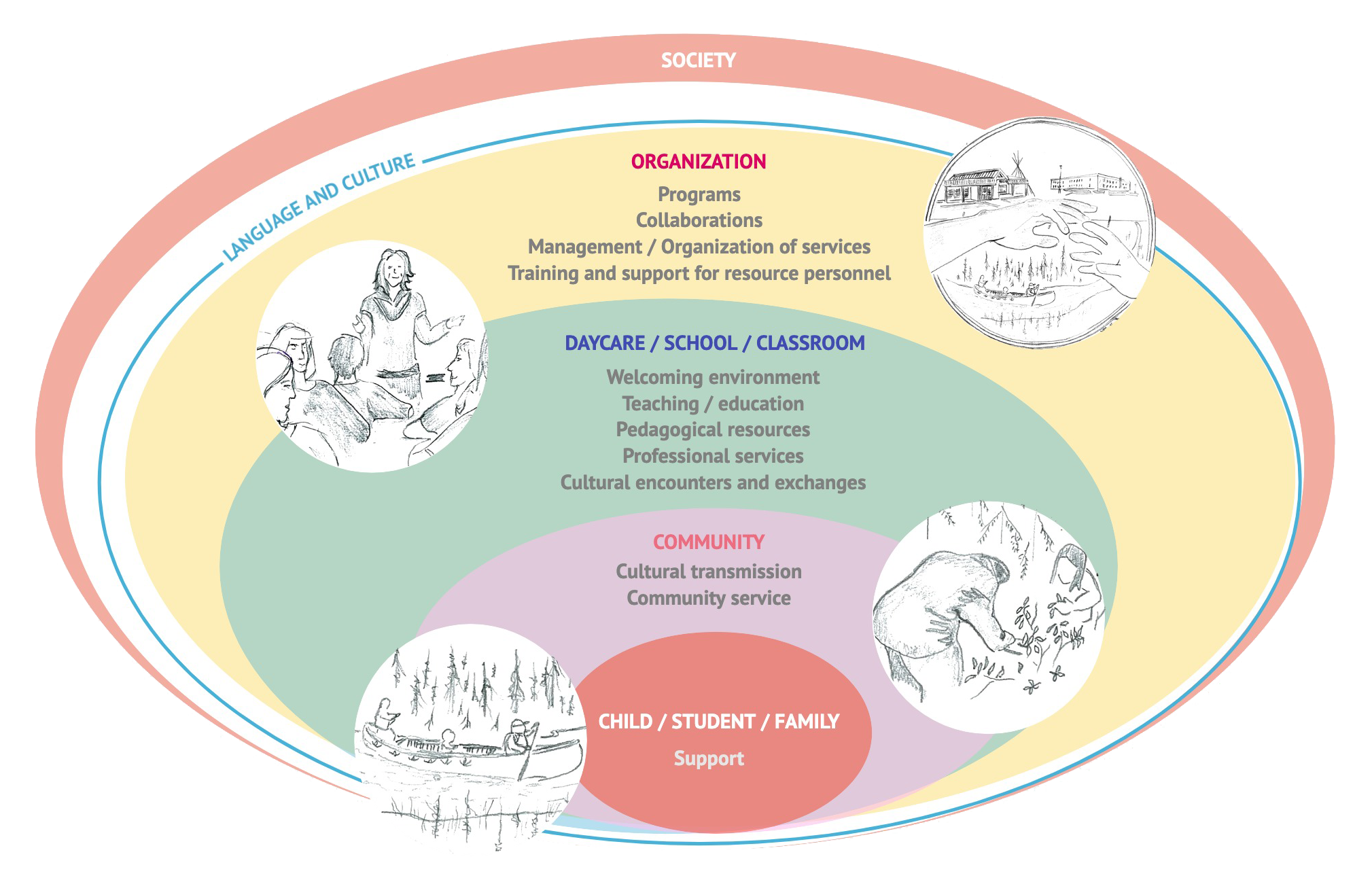
POSSIBLE SOLUTIONS 
OR ACTIONS
SUPPORTED BY RESEARCH RESULTS
- Create and maintain a relationship of trust through respectful, caring support for youth, adults and families.
- Raise awareness of cultural safety among all school staff and involve them in this approach.
- Value cultural roots in education.
- Take into account the plurilingual context of learners.
- Adjust assessment tools and criteria.
- Review the programs of several school subjects to integrate Indigenous knowledge, realities and perspectives.
- Develop culturally meaningful resources and materials for learners.
- Fully recognize Competency 15 and explicitly integrate it to the framework of professional competencies in teaching.
- Mobilize Indigenous knowledge, realities and perspectives in the training of all teachers and school staff.
- Support intercultural and interprofessional collaboration and networking.
- Promote cultural encounters.
NEW COURSE OF ACTIONS 
OR RESEARCH QUESTIONS
Identity - Language - Culture
This research provides access to specific examples of cultural safety practices developed in environments that welcome First Peoples learners. It generates a rather positive picture of what is being done in these environments. It is important to note however, that this sample is not representative of what is done in general terms.
Much remains to be done to overcome prejudice, racism and discrimination in society and in educational circles.
It is essential to work collectively to change mentalities and transform practices in a broader sense. Projects that offer support to teams and train school staff could facilitate progress.
All research is important, and thanks to the diversity of subjects of study and analytical perspectives, it will be possible to propose courses of action for lasting change.

